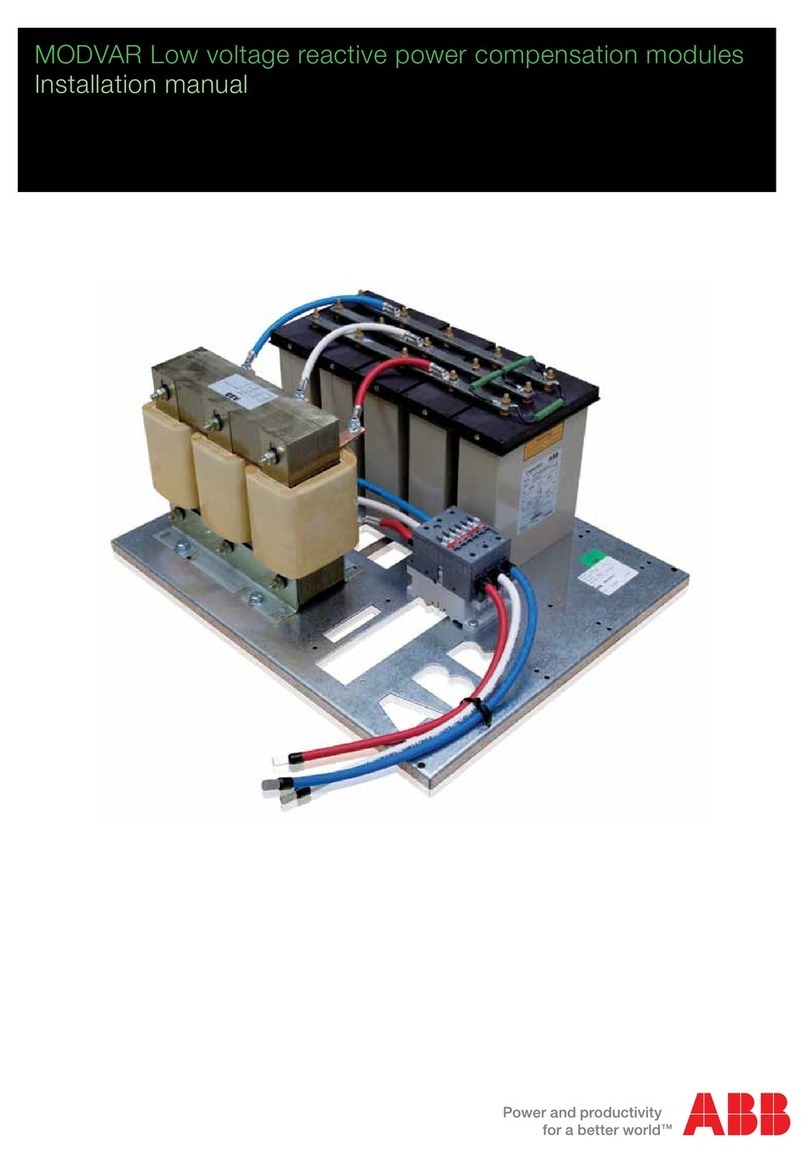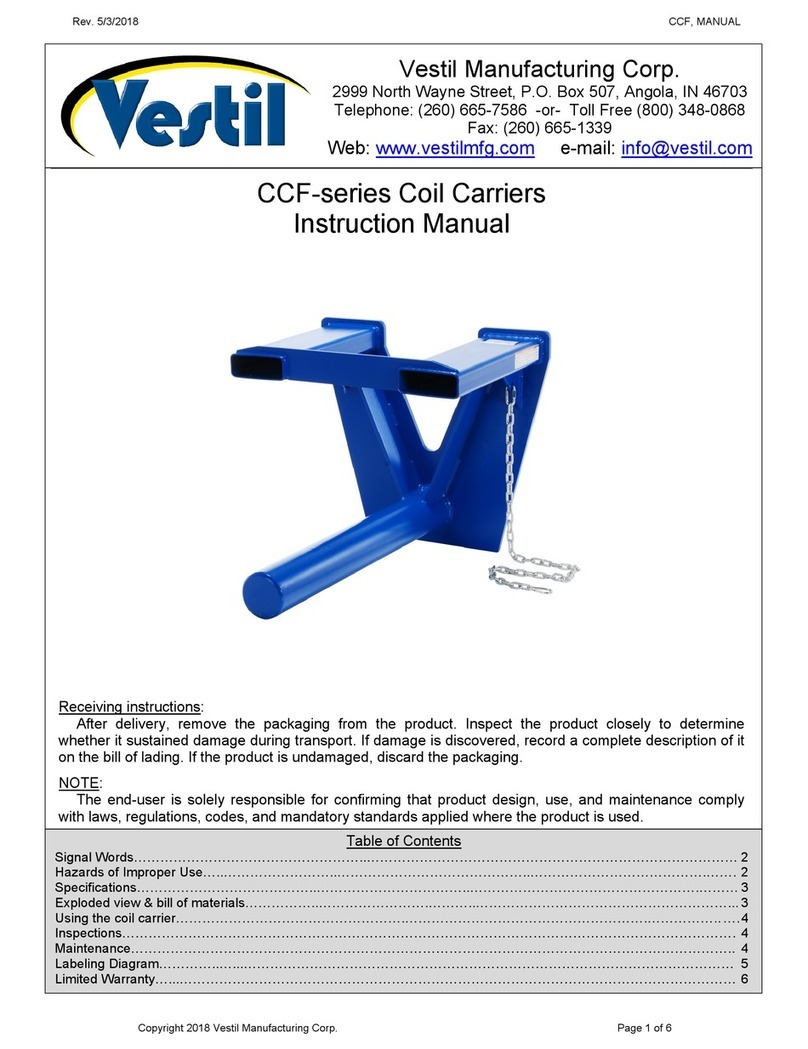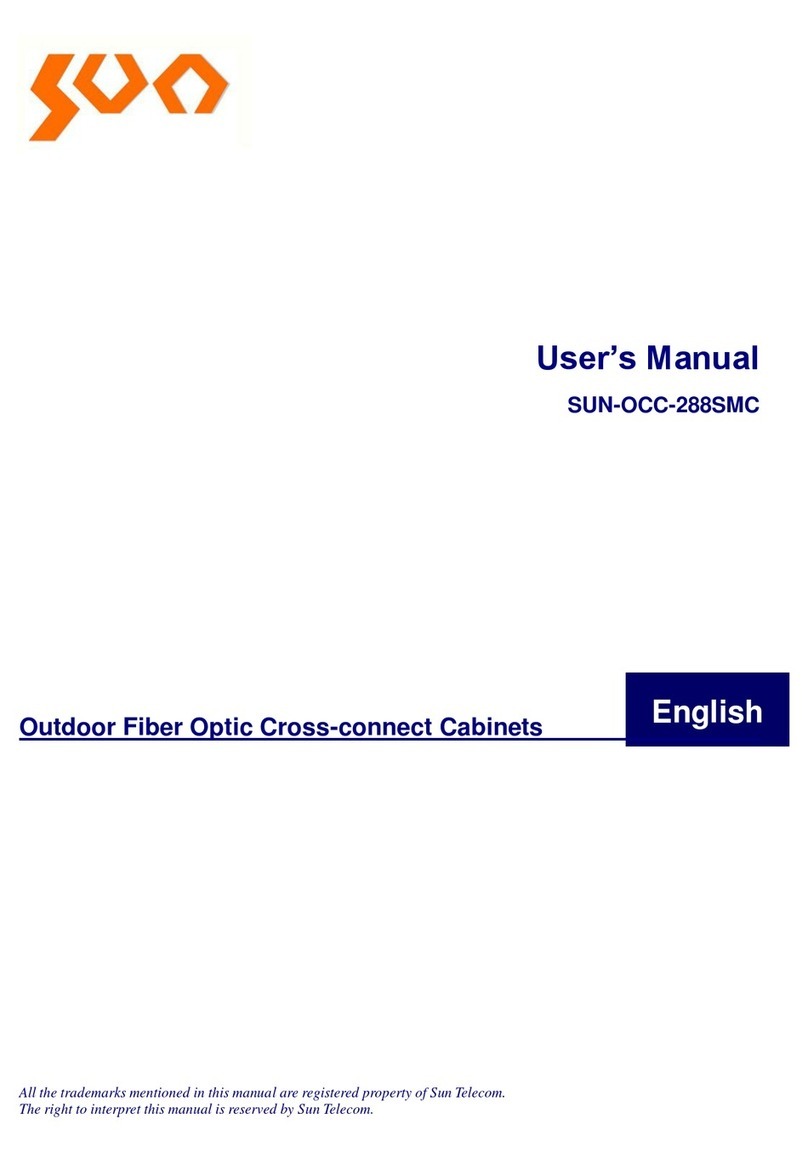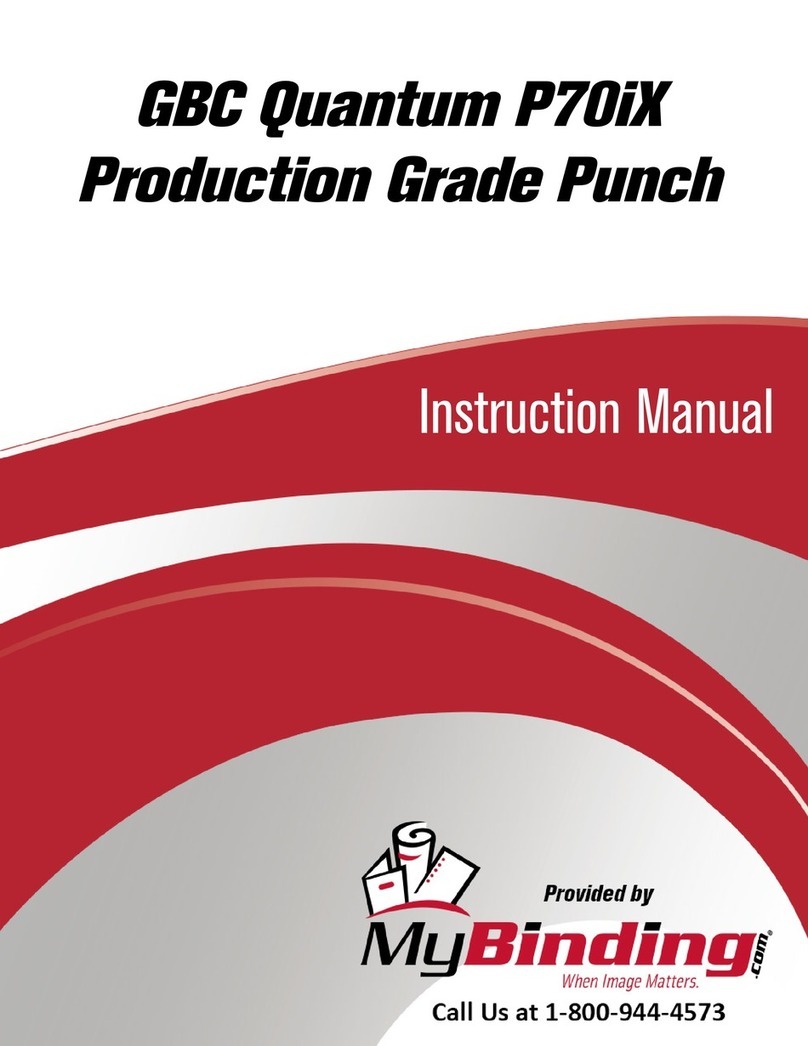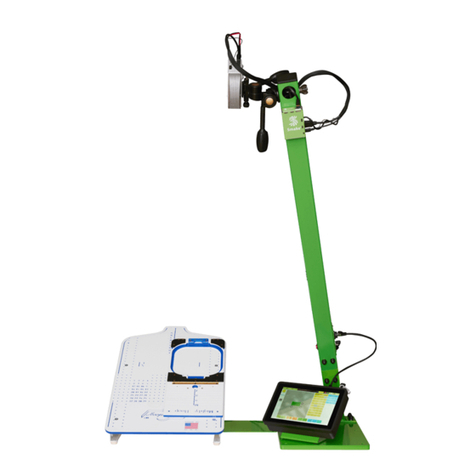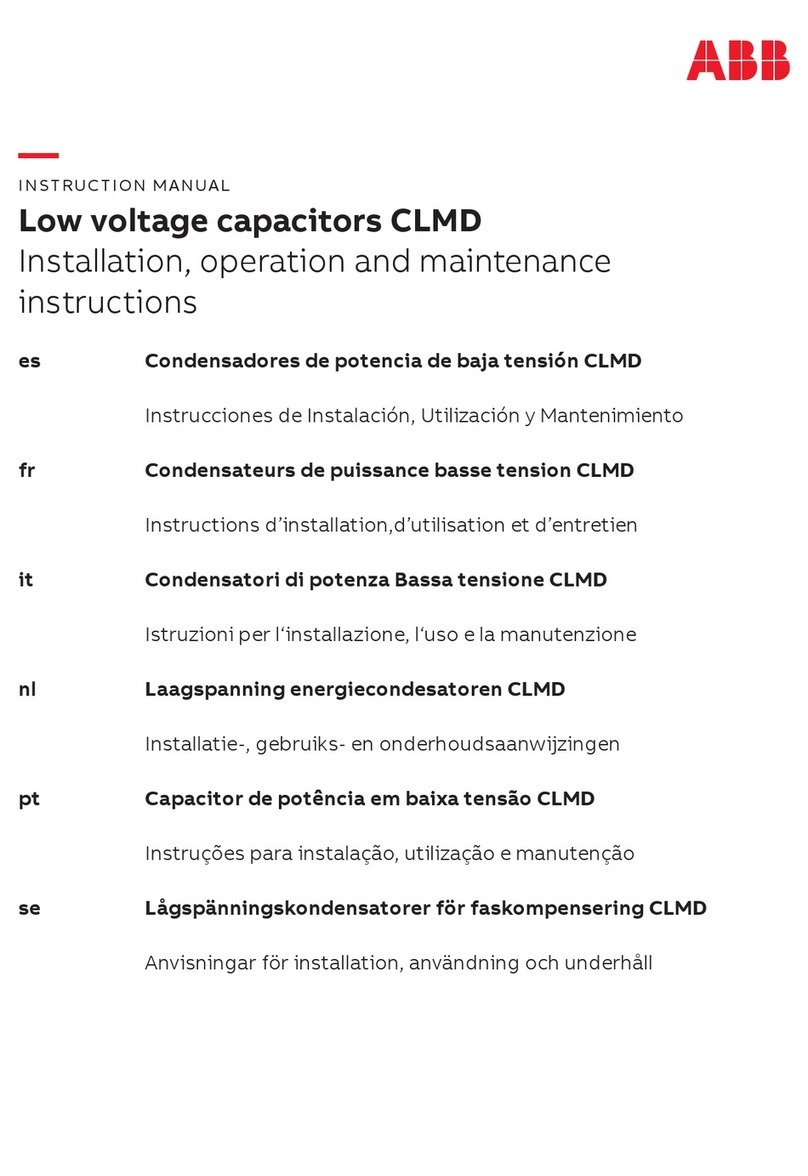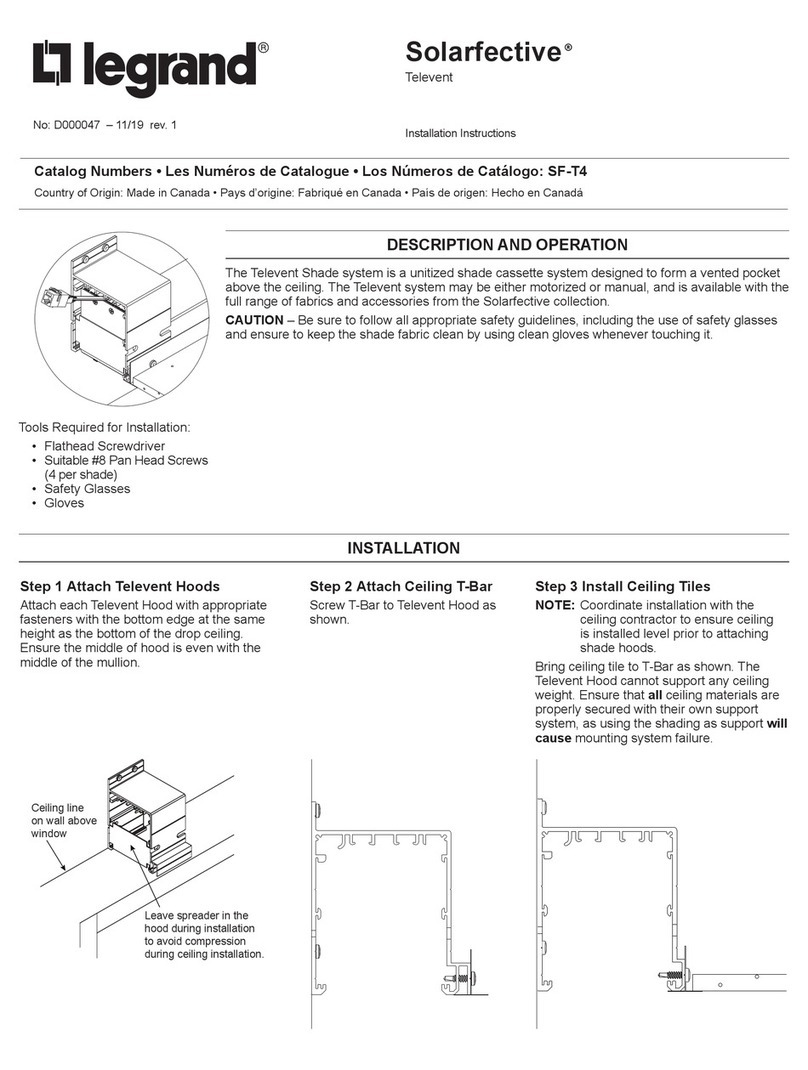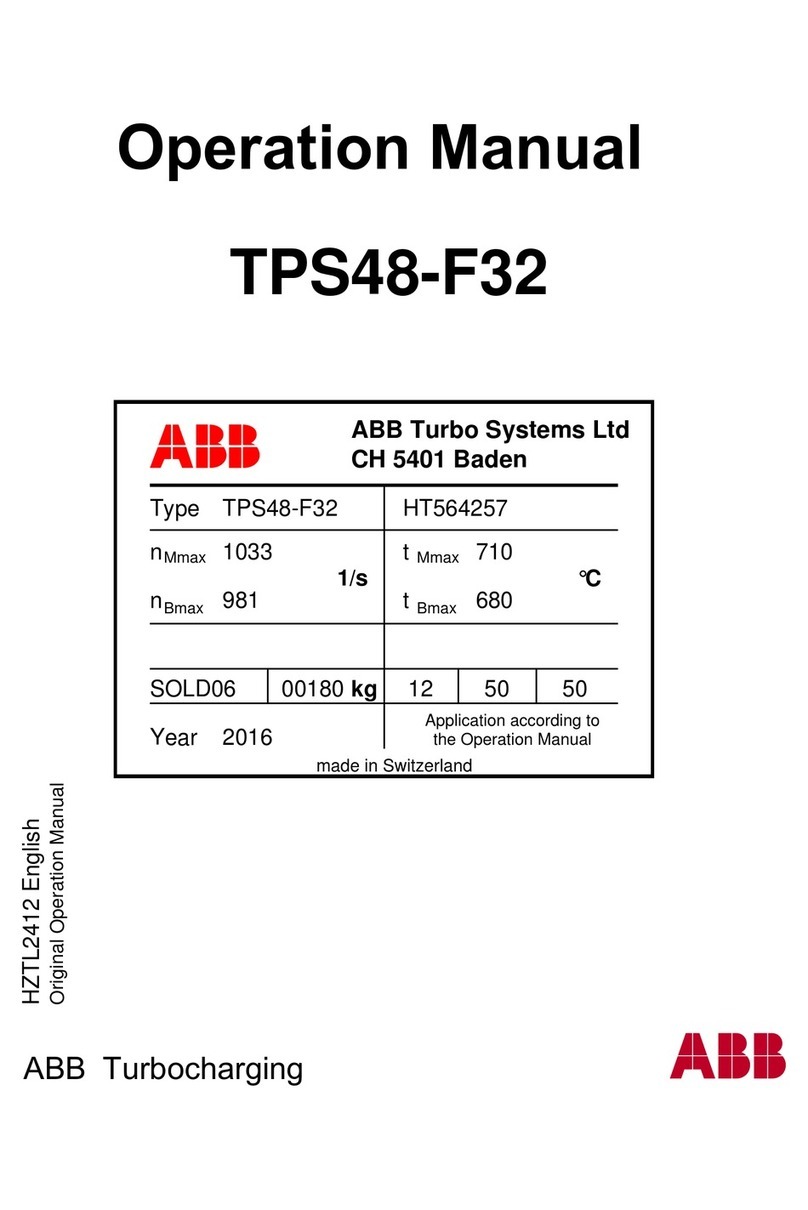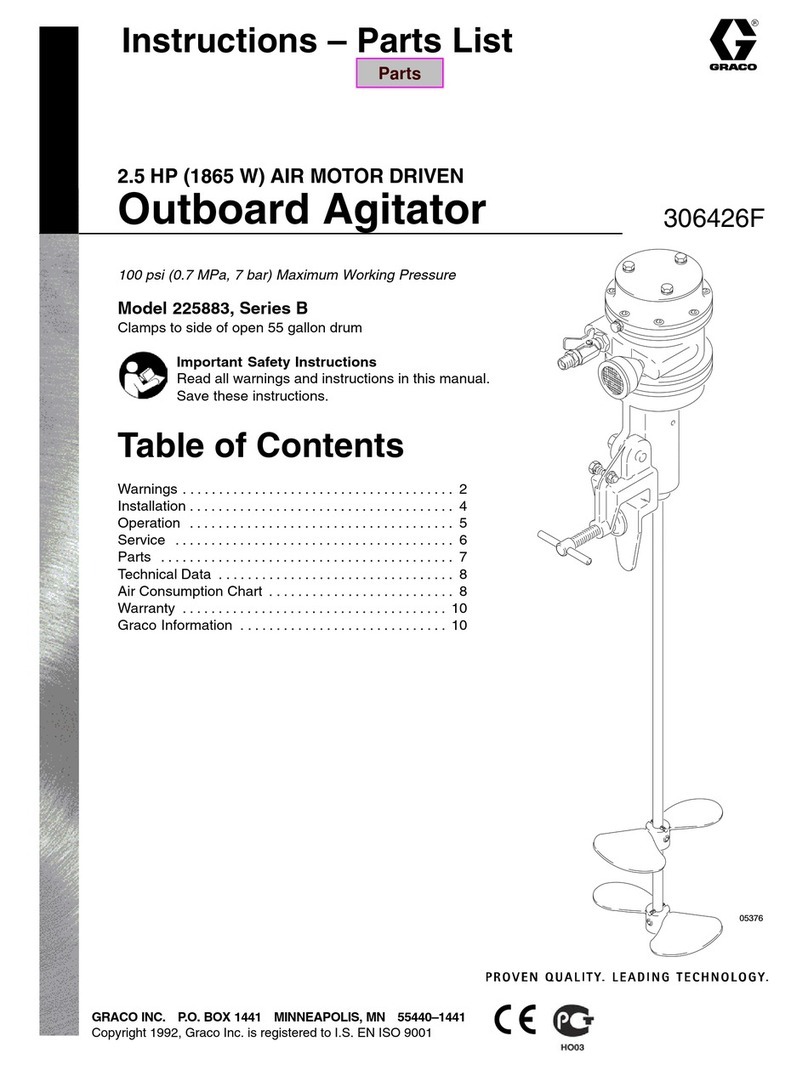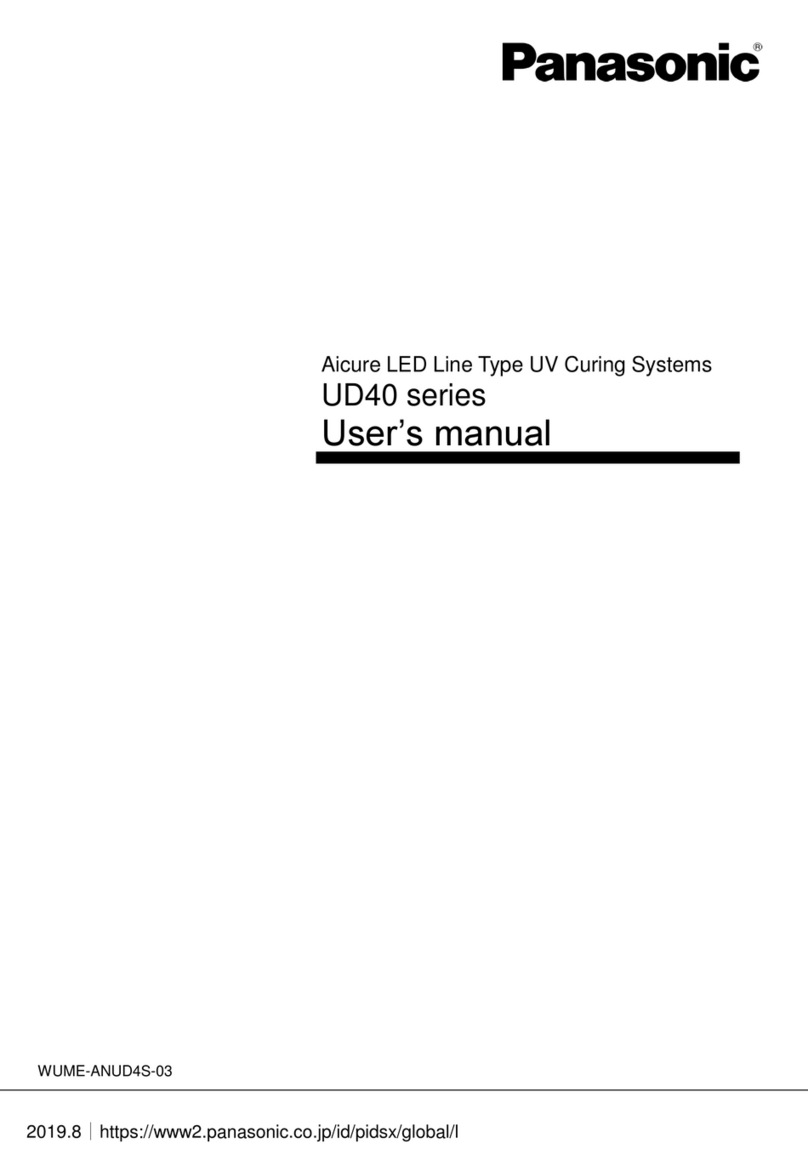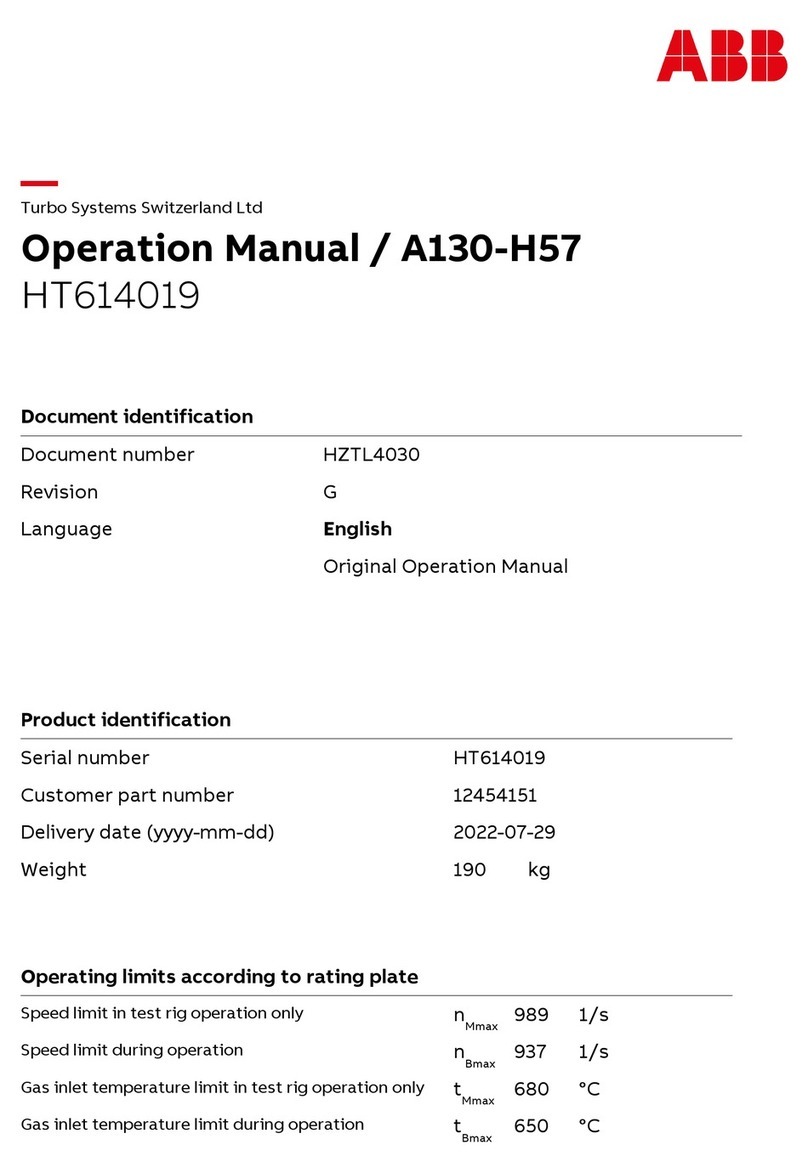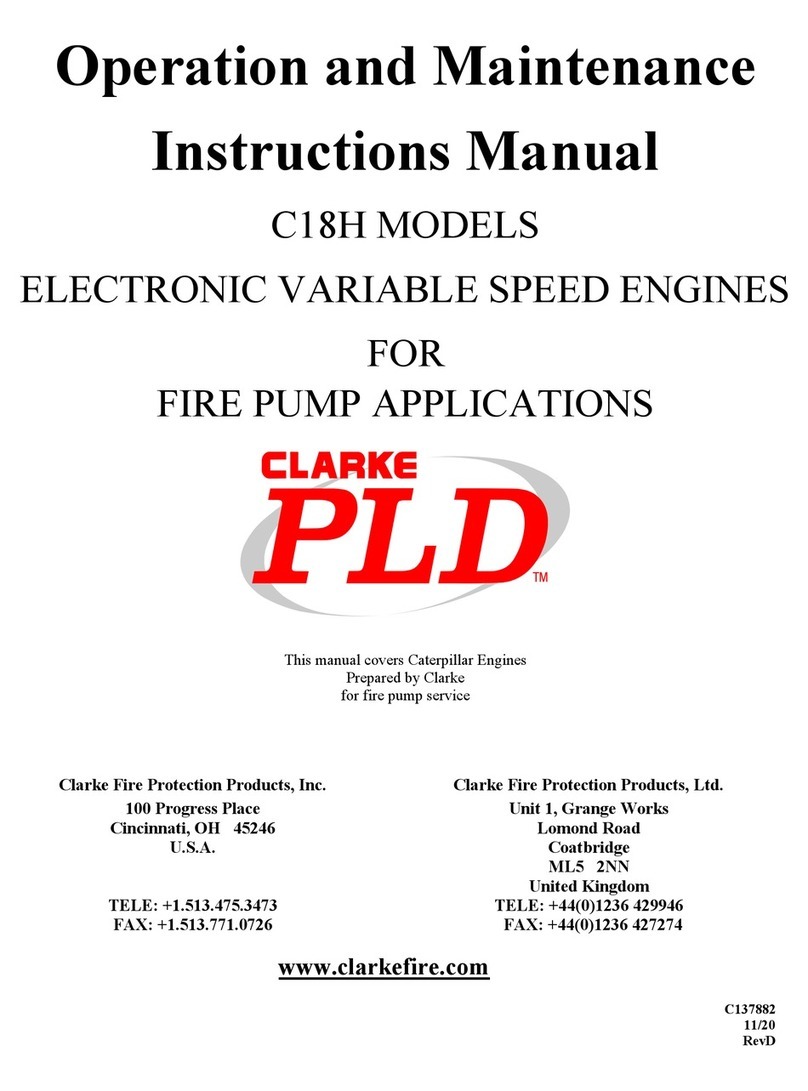GORTER CONTROLS COCON 26 N-LP User manual

Operators manual
Gorter-Controls B.V. – Schoonhoven- The Netherlands
Operators manual underground gas pressure reducing station
Type: COCON 26 N-LP
Page 2
Contents Page:
1. Introduction 3
2. General 4
2.1 Technical data 4
2.2 What is the COCON 26 5
2.3 Construction 5
2.4 Operation 8
2.5 Automatic operation 9
2.6 Maintenance 9
3. Safety 10
4. Operator 11
4.1 Introduction: operator 11
4.2Checklist 11
4.3 Checking: correct operation 12
4.4 Spare parts 13
4.5 Installation of casing 13
4.5.1 Soil condition and foundation 14
4.5.2 Pit dimensions 14
4.5.3 Placement of the casing 15
4.5.4 Installation of vent pipes 15
4.6 Starting up unit operations 16
4.6.1 Emergency-stop 16
4.6.2 Installation of unit 17
4.6.3 Leakage test 17
4.6.4 Operation 18
4.7 Shutting down the cartridge operations and the
removal of the cartridge 18
4.8 Adjustment data 19
4.8.1 Adjustments 19
4.9 Replacing parts 20
4.9.1 Upper seal rings 21
4.9.2 Lower seal rings 21
4.9.3 Dust filter 22
4.10 Capacity: Increase of 22
4.11 Storage 22
5. Options 23
5.1 Introduction: Options 23
6. Additional data 24
6.1 Adjustment form 24

Operators manual
Gorter-Controls B.V. – Schoonhoven- The Netherlands
Operators manual underground gas pressure reducing station
Type: COCON 26 N-LP
Page 3
1.Introduction
This manual has been compiled to help you install, adjust and maintain the gas pressure reducing station.
It answers the most recurring questions about the gas pressure reducing station and it explains how to
replace several parts easily. The manual is for operators who are qualified in assembling and operating gas
installations.
This manual has been divided into six chapters, in order to give the operators easy access to the required
information.
- Chapter 1 - Introduction
- Chapter 2 - General gives general information concerning the gas pressure reducing
station.
- Chapter 3 - Safety describes how to operate the gas pressure reducing and safety unit
safely.
- Chapter 4 - Operator the installation of the casing and the adjustment of and
maintenance
to the gas pressure reducing and safety unit.
- Chapter 5 - Options is a description of the options with which the station can be
equipped.
- Chapter 6 - Additional data contains various lists to help you find the required information in this
manual.
This gas pressure reducing station is the result of years of development. Development is still in process. We
will inform you by mailing about developments concerning this type of gas pressure reducing station.
Definitions
p1= Inlet pressure
p2= Reduced pressure
p = Differential pressure (p1-p2)
CR = Closing rate
MR = Monitoring rate
Q = Capacity
Note
If pages of the manual become unreadable due to damage etc., you can order new pages from
GORTER-Controls. Do not forget to state the manual version, the type of gas pressure reducing station and
the serial number. The version number is printed at the cover of this manual.

Operators manual
Gorter-Controls B.V. – Schoonhoven- The Netherlands
Operators manual underground gas pressure reducing station
Type: COCON 26 N-LP
Page 4
2. General
2.1 Technical data
Technical data COCON 26:
Medium : all types of gases except for sulphur-containing gases
(H2S). Stations for gas pressure reduction of gases
containing sulphur are available on request.
Inlet pressure (p1) : maximum 19 bar ( higher pressures upon request)
Temperature : -15 °C to +50 °C
Capacity :(at an outlet pressure p2=100 millibar)
Inlet pressure p1= 1.5 bar : maximum 1300 mn
3/h
Inlet pressure p1= 4.75 bar : maximum 3000 mn
3/h
Inlet pressure p1= 8 bar : maximum 5400 mn
3/h
Reduced pressure (p2) : minimal 20 mbar
Minimal differential pressure p : 0.8 bar
Total weight : about 350 kg
Cartridge weight : about 50 kg
Packed volume : about 1 m3
Length : maximum 890 mm
Width : maximum 890 mm
Height : maximum 1054 mm
Inlet diameter casing : DN50
Outlet diameter casing : DN150
Flanges : drilled according to PN16/DIN 2633 or ANSI 150
Impulse line connection : fittings according to DIN 2353
Pressure gauges : 3, for measuring inlet pressure, intermediate pressure
(between regulator and monitor control) and outlet
pressure.
Pressure gauge : ¼" BSP thread
Regulator type : sleeve
Monitor type : control tube
Shut off valve type : release system
Filter material : felt
Filter fineness : 3 micron (0,003 mm)
Safety devices
First safety device : monitor control
Second safety device : safety shut-off valve with shut-off relay
Location of type plates
Casing
: beneath pit cover
Unit : on membrane cover
Pilots : on the side of the pilot

Operators manual
Gorter-Controls B.V. – Schoonhoven- The Netherlands
Operators manual underground gas pressure reducing station
Type: COCON 26 N-LP
Page 5
Information on type plates
Casing
: name manufacturer, type specification, serial number,
maximum operation pressure, year of construction
Unit : name manufacturer, type specification, serial number,
maximum operation pressure, minimal reduced pressure,
year of construction
Pilots : name manufacturer, type specification, spring type, serial
number, adjustment data, year of construction, maximum
allowed inlet pressure
2.2 What is the COCON 26
The COCON 26 is an underground gas pressure reducing station, for the reduction of gas pressure, with an
inlet pressure (p1) of maximum 19 bar. The station ensures a constant reduction of gas pressure till a
minimum of 20 millibar (p2), independent of the gas consumption.
The minimal differential pressure Δp (=p1-p2) at which the station operates is 0,8 bar.
The station is made of nodular cast iron GGG 40.3, steel, aluminium, bronze and synthetics.
2.3 Construction
Remark: For the location of the parts of the gas pressure reducing station, mentioned in the text, we
refer to illustration 2.1.
The short numbers between the brackets, which are mentioned in the text,
are position numbers of the parts in illustration 2.1.
The top of the station is located a few centimetres above or at ground level. Depending on the composition
of the soil, a concrete foundation (plate) under the station may be needed.

Operators manual
Gorter-Controls B.V. – Schoonhoven- The Netherlands
Illustration 2.1 'Cross section Cocon 26'
01 Casing
02 Ball valve DN50
03 Casing cover
04 Pit cover
05 Dust filter
06 Regulator
07 Monitor control
08 Safety shut-off valve
09 Shut-off relay
10 Butterfly valve DN150
11 Handles
Operators manual underground gas pressure reducing station
Type: COCON 26 N-LP
Page 6

Operators manual
Gorter-Controls B.V. – Schoonhoven- The Netherlands
Operators manual underground gas pressure reducing station
Type: COCON 26 N-LP
Page 7
The gas pressure reducing station COCON 26 consists of two parts:
- the casing (01);
- the gas pressure reducing and safety unit.
Remark: The "gas pressure reducing and safety unit" will be referred to as the cartridge in the rest of
the manual.
A ball valve (02) is attached to the inlet of the casing. As the ball-valve is open, the ball-valves handle
prevents to open the casing cover. The hinged pit cover (04), with lock, closes over the casing cover.
A dust filter (05) is attached under the cartridge.
The gas pressure reduction is achieved with a regulator (06) (sleeve type).
The gas will pass through two safety devices in the cartridge:
- The monitor control (07) is the first device. If the regulator should fail open, due to a malfunction,
then the monitor control will take over the function of the regulator.
- The second device consists of the safety shut-off valve (08) and the shut-off relay (09). The shut-off
relay, with an emergency knob, is attached to the top of the cartridge. If the monitor control opens
excessively, then the shut-off relay will detect an increase of pressure and move the steering rod
upward. The safety shut-off valve will cut off the gas supply by spring pressure.
The regulator and the monitor control are pilot controlled. The required outlet pressure is set with the pilots.
A butterfly valve (10) is attached to the outlet flange. The valve can be operated without removing the cover
of the casing. While the valve is open, it is not possible to open the casing cover.
The installation of a relief valve is possible.
Pressure transmitters for distance measurements of pressure, are also available. The station is fitted with
three pressure gauges.The gauges are for the inlet pressure, intermediate pressure (between regulator and
monitor control) and outlet pressure. The gauges are situated under the pit cover and are visible when the pit
cover is opened. The gauges are protected by the plexiglass casing cover.
The pressure compartments can be fitted with vent pipes and valves.These valves are than situated directly
under the pit cover and block the casing cover, when the station is in operation.
Two handles are attached to the cartridge, so that the gas pressure reducing and safety unit can be easily
removed from the casing.

Operators manual
Gorter-Controls B.V. – Schoonhoven- The Netherlands
2.4 Operation
Regulator
Gas flows from the gas pipe through the ball valve into the casing. The dust filter prevents dirt particles from
entering the cartridge. Gas flows past the opened shut off valve and monitor control to the regulator. The
required outlet pressure is set by the regulator pilot.
The higher the gas consumption level, the further the regulator will open. If the inlet pressure is increased
then the passage will reduce. The result is a constant outlet pressure, according to the value set on the pilot,
independent of the gas consumption.
First safety device: Monitor control
Should the regulator malfunction, then the monitor control takes over the function of the regulator and
ensures that the gas supply is maintained. The value on the monitor control pilot is set at higher value, than
the value set on the regulator pilot and therefore the gas pressure will be slightly higher.
Second safety device: Shut off valve
Should the monitor control also malfunction, then the shut off valve will cut off the gas supply. The value at
which the relay activates is slightly higher, than the value set on the monitor control pilot.
When the regulator and monitor control malfunctions have been corrected, the shut off relay can be reset by
pressing a button, which causes the shut off valve to open.
Illustration 2.2 'Flow scheme COCON 26'
Objectives
The operation of the gas pressure reducing station should meet the following objectives:
- There may not be any gas leakages.
- The outlet pressure must be equal to the pressure set on the regulator pilot.
- No dirt particles in the discharge pipe.
- No moisture may enter the casing.
Operators manual underground gas pressure reducing station
Type: COCON 26 N-LP
Page 8

Operators manual
Gorter-Controls B.V. – Schoonhoven- The Netherlands
Operators manual underground gas pressure reducing station
Type: COCON 26 N-LP
Page 9
2.5 Automatic operation
The cartridge operates automatically if correctly installed and set. Should a malfunction occur, then the
cartridge automatically shuts off the gas supply.
2.6 Maintenance
Although the cartridge has relatively few moving parts, regular maintenance is advised.This helps to ensure
the long and smooth operation of the cartridge.
Thanks to the construction of the gas pressure reducing station, the cartridge can be replaced quickly and
easily with a (adjusted) spare cartridge. Cartridge maintenance can be done in the service shop.
Check lists
You will find the maintenance check list on page 10 (paragraph 4.2). This list contains all the check points
which must be checked during a maintenance check.

Operators manual
Gorter-Controls B.V. – Schoonhoven- The Netherlands
Operators manual underground gas pressure reducing station
Type: COCON 26 N-LP
Page 10
3. Safety
Due to the fact that the gas pressure reducing station operates with explosive mediums, all safety
aspects must be taken into account. Regular maintenance of the gas pressure reducing station
promotes safe operation.
- When in doubt or operating the gas pressure reducing station for the first time, read the
necessary instructions in this manual.
DANGER: No smoking or fire within a radius of 10 metres of the station.
- Before starting maintenance, always close the valves in the supply and discharge pipes first.
These valves are normally situated within a distance of 5 metres of the station's inlet and
outlet flanges.
- Ensure that you are sufficiently qualified to install and remove the cartridge.
- Ensure that you are sufficiently qualified to service the cartridge.
- Protect - if necessary - your ears, eyes and hands, when carrying out maintenance work.
Wear ear protection, safety glasses and working gloves.
- Close the casing cover before you start operating the gas pressure reducing station.
- Ensure that the station and the direct surroundings are always well illuminated in dark and
twilight, during on site maintenance.
- Ensure that there is sufficient ventilation in the near surroundings of the station, when
removing the cartridge. The fumes from the cartridge can damage your health.
- Use spark free tools for all maintenance work to prevent explosions.
- Take care of your back during the installation and removal of the cartridge. Kneel and keep
your back straight.

Operators manual
Gorter-Controls B.V. – Schoonhoven- The Netherlands
Operators manual underground gas pressure reducing station
Type: COCON 26 N-LP
Page 11
4.Operator
4.1 Introduction: operator
This chapter gives, with the help of illustrations, information which is necessary to the operator.
4.2 Check list
Regularly check all the check points on the check list and carry out all procedures which are
necessary for the correct operation of the cartridge.
Data on the COCON 26 is already noted on the check list form. Use the forms in this book as originals
and make copies for the notes. Write your name and the date on the copy and cross off the points
when they have been checked.
Keep the used copy in the back of this manual, so that you can keep track of the points which have
been checked. This will make it easier for you to keep track of all maintenance. It also enables you to
keep an account of the wear and tear of the COCON 26 parts and allows you to order and replace
parts without loss of time or quality.
Check list
Model : COCON
Type : 26
Delivery date : ....-....-....
Station number : .............
Name :.....................................................................................................................................................
Date :.....................................................................................................................................................
Check points:
- Check the inner side of the casing for traces of damage.
- Check that the supply and discharge pipes are fitted correctly and according to regulations.
- Check that the seal surfaces of the casing and the cartridge are clean.
- Check that the seal rings are sufficiently greased.

Operators manual
Gorter-Controls B.V. – Schoonhoven- The Netherlands
Operators manual underground gas pressure reducing station
Type: COCON 26 N-LP
Page 12
4.3 Checking: correct operation
The cartridge must be readjusted if it is not operating as required. The cartridge's operation
requirements, are described in paragraph 2.4 on page 9. Adjustment data can be found in paragraph
4.8 on pages 24 and 25.
Failures can be caused by:
Problem 1 : The outlet pressure is too high.
Cause a : The regulator pilot ARP-LP has not been correctly adjusted.
Solution a : Readjust the pilot. See paragraph 4.8 on page 18.
Cause b : The regulator has opened. The function of the regulator has been
taken over by the monitor control.
Solution b : Replace the cartridge with a spare cartridge. Overhaul the defective
cartridge.
Problem 2 : The outlet pressure is much too high.
Cause : The regulator, monitor control, shut off valve and shut off relay are defect.
Solution : Replace the cartridge with a spare unit. Overhaul the defective
cartridge.
Problem 3 : The outlet pressure is too low.
Cause a : The regulator pilot ARP-LP has not been correctly adjusted.
Solution a : Readjust the pilot. See paragraph 4.8 on page 18.
Cause b : The differential pressure Δp is too small.
Solution b : Increase the inlet pressure.
Cause c : The filterelement is faulty.
Solution c : Replace the filterelement with a new one. See paragraph 4.9.3 on page 21.
Problem 4 : Gas is required, but is not passing through.
Cause a : The ball valve is closed.
Solution a : Open the ball valve.
Cause b : The butterfly valve is closed.
Solution b : Open the butterfly valve.
Cause c The valve in the supply pipeline, located within a distance of 5 meters
from the station's inlet is closed.
Solution c : Open the valve in the supply pipeline.
Cause d : The valve in the discharge pipeline, located within a distance of 5 meters
of the station's outlet is closed.
Solution d : Open the valve in the discharge pipeline.
Cause e : The regulator pilot ARP-LP and/or the monitor control pilot MRP-LP
are not adjusted correctly.
Solution e : Readjust one or both pilots. See paragraph 4.8 on page 18.
Cause f : The safety shut-off valve is closed.
Solution f : Replace the cartridge with a spare cartridge. Overhaul the defect
cartridge.

Operators manual
Problem 5 : There is moisture on the cartridge.
Cause : The cartridge and the casing cover seals are damaged.
Solution : Replace the seal rings.
Problem 6 : There is dust in the discharge pipe.
Cause : The filterelement is defect.
Solution : Replace the defect filterelement with a new filterelement.
See paragraph 4.9.3 on page 21.
4.4 Spare parts
Below is a list of parts, that have to be regularly replaced. We strongly recommend you to keep these
parts in stock.
number description article number paragraph
[2]
[2] Seal ring
Seal ring 8401209103267
8401253603247 4.9.2
4.9.1
4.5 Installation of casing
This chapter describes the installation of the casing and the attachment of the supply and discharge
pipes to the casing. Illustration 4.1 is a drawing of a fully installed station. Use this drawing for
guidance in the next four paragraphs.
Illustration 4.1 'Fully installed station'
Gorter-Controls B.V. – Schoonhoven- The Netherlands
Operators manual underground gas pressure reducing station
Type: COCON 26 N-LP
Page 13

Operators manual
Gorter-Controls B.V. – Schoonhoven- The Netherlands
Operators manual underground gas pressure reducing station
Type: COCON 26 N-LP
Page 14
4.5.1 Soil condition and foundation
Depending on the composition of the soil, a concrete foundation (plate) under the station may be
needed, to prevent the station from sinking. With the following soil compositions a foundation is
necessary:
- Organic soil compositions such as peat, humus and gardening soil.
- Very fine grained soil compositions (clay plates) such as clay, bolder clay, sandy clay and
compost.
We also advise you to use a foundation under the station with fine grained soil compositions, such as
loam, sandy clay, silt and loess. Use concrete as foundation material.
A foundation is not necessary with moderate rough grained soil compositions, such as sand, gravel
sand, wind born sand deposit and sandy plates.
The foundation must be at least 80 millimetres thick. Ensure that you do not only take the weight of
the station into account, while calculating the thickness of the foundation, but also take extra weight
into account. (For example, the placing of a vehicle on the pit cover).
The width x length of the foundation must be a minimal of 1x1½ meters. Ensure that the top of
foundation plate is levelled.
4.5.2 Pit dimensions
The pit depth depends on the thickness of the foundation. To determine the pit depth of a non ground
sunk station (pit cover above ground level), always use the following formula:
depth pit = 980 + df
Fill in the thickness of the foundation dfin millimetres. The number "980" is the distance from the
bottom of the casing to halfway the pit cover frame. The result - the depth of the pit to be dug - is in
millimetres.
To determine the pit depth of a ground sunk station (pit cover at ground level), always use the
following formula:
depth pit = 1054 + df
Fill in the thickness of the foundation dfin millimetres. The number "1054" is the distance from the
bottom to the top of the casing. The result - the depth of the pit to be dug - is in millimetres.
Example: For a foundation plate (df) that is 100 millimetres thick, the pit depth, for a non ground
sunk station is 980 + 100 = 1080 millimetres.
For a foundation plate (df) that is 100 millimetres thick, the pit depth for a
station equal to ground level is 1054 + 100 = 1154 millimetres.
Dig a funnel shaped hole, so that you can easily attach the supply and discharge pipes to the casing.
Fasten the piping - tension free - in the clamps, which are attached to the foundations. Delivery of a
complete foundation - supplied with a positioning frame for the casing and fastening clamps for the
piping - is possible.

Operators manual
Gorter-Controls B.V. – Schoonhoven- The Netherlands
Operators manual underground gas pressure reducing station
Type: COCON 26 N-LP
Page 15
4.5.3 Placement of the casing
Remark: Use a lifting tackle, a hoist and two slings to install the casing.
During bad weather conditions (storm and wind), place a shelter above the station.
This will prevent water and dirt from getting into the station. It is important that the
area under the shelter is well ventilated.
Support the opened pit cover, by windforce eight and up, with a support.
- Close casing cover and pit cover
- Put the slings around the plate to which the pit cover frame is attached.
- Hoist the casing carefully. Ensure that the centre of the casing hangs above the centre of the
pit.
- Lower the casing carefully onto the foundation.
The supply and discharge pipes are attached to the casing with a connecting flange.
- Put a seal ring DN50 between the supply pipe flange and the ball valve flange.
- Attach the supply pipe flange to the ball valve flange with four bolts M16, four nuts M16 and
eight washers. The washers are situated between the bolt heads and the supply pipe flange
and between the ball valve flange and the nuts.
- Do not put a seal ring DN150 between the discharge pipe flange and the butterfly valve.
- Attach the discharge pipe flange to the butterfly valve with eight bolts M20, eight nuts M20 and
sixteen washers. The washers are situated between the bolt heads and the discharge pipe
flange and between the butterfly valve and the nuts.
Remark: Insulate the flange connections with a covering, to prevent the fastenings from
corroding.
We advise you to place a railing around the station. This prevents the station from obstruction e.g.
vehicles. Use galvanized piping.
4.5.4 Installation of vent pipes
Remark: During bad weather conditions (storm and wind), place a shelter above the station.
This will prevent water and dirt from getting into the station. It is important that the
area under the shelter is well ventilated.
Support the opened pit cover, by windforce eight and up, with a support.
The pressure in all of the stations compartments must be equal to the atmospheric pressure, before
you remove the cartridge. This means that you must deventilate all compartments. The needle valves,
with which you deventilate the compartments, are situated directly under the pit cover. Open the
needle valves before removing the cartridge from the casing, so that compressed gas will expand to
atmospheric pressure.
- Fill the space between the station and wall of the hole, until just under the vent connection on
the casing with soil. Press the soil firmly.
- Place the vent pole at a distance of approximately 0,5 metres from the casing.
- Attach two ½" hoses with fittings between the Cocon body and the vent pole.
- Close the pit cover.
- Fill the space between the station and wall of the hole to ground level with soil. Press the soil
firmly.

Operators manual
4.6 Starting up unit operations
Remark: During bad weather conditions (storm and wind), place a shelter above the station.
This will prevent water and dirt from getting into the station. It is important that the
area under the shelter is well ventilated.
Support the opened pit cover, by windforce eight and up, with a support.
Illustration 4.2 is a top view of the station with the pit cover open. Use the illustration for locating the
various valves and pressure gauges.
Illustration 4.2 ' Station with an open pit cover'
4.6.1 Emergency-stop
Use the emergency stop control button on the shut-off relay, when a malfunction occurs and the
cartridge must be put out of operation immediately.
- Open the casing cover.
On the shut off relay is a button. The button is the emergency stop control button.
- Press the emergency stop control button. This causes the safety shut-off valve, to close down
the gas supply to the regulator.
An activated shut-off valve can be recognized, by the raised red button - under the transparent cap -
on the shut-off relay.
After correcting the malfunction you can reset the emergency stop control button, by pushing the red
button downwards.
Gorter-Controls B.V. – Schoonhoven- The Netherlands
Operators manual underground gas pressure reducing station
Type: COCON 26 N-LP
Page 16

Operators manual
Gorter-Controls B.V. – Schoonhoven- The Netherlands
Operators manual underground gas pressure reducing station
Type: COCON 26 N-LP
Page 17
4.6.2 Installation of cartridge
This paragraph describes the installation of the cartridge in the casing. The cartridge can be replaced
with a spare cartridge (adjusted) within 20 minutes. The cartridge is positioned with a bayonet
coupling. The cartridge is locked by the influence block which prevents the cartridge to rotate in the
casing.
To install the cartridge in the casing, proceed as follows:
Remark: Take care of your back, while the installation and removal of the cartridge.
Kneel and keep your back straight.
- Lift the cartridge by the handles.
- Lower the cartridge perpendicular in the casing.
- Rotate the cartridge to the right until the cartridge indenting engages the casing indenting.
Ensure that the two drilled holes in the influence block are an extension of the threaded holes
in the casing.
- Attach the influence block to the casing with two bolts M12.
Herewith the unit is locked.
4.6.3 Leakage test
Check the station for gas leakages after installing the cartridge. You check the two upper and lower
seal rings for leaks with the leakage test (see paragraphs 4.9.1 and 4.9.2 on page 20).
Checking the lower seal rings as follows:
- Open the casing cover.
- Close the shut-off valve by pressing the emergency stop control button in.
- Close the supply pipe's ball valve DN 50.
- Close the butterfly valve DN150 in the discharge pipe, by turning the handle a quarter of a
turn to the left.
- Open the valve in the supply pipe, located within 5 meter of the station.
- Open the ball valve DN50 in the supply pipe, by turning the valve's handle slowly, a quarter of
a turn to the right.
The indicator on the pressure gauge, which shows the reduced pressure in the discharge pipe, may
not deflect. If the indicator deflects, then gas is leaking through the lower seal rings. Stop all
operations immediately (paragraph 4.7 on page 18) and replace the lower seal rings (paragraph 4.9.2
on page 21).
After checking if the lower seal rings are operating correctly, you can press the reset button on the
shut off relay.
- Check for gas leakages between the casing and the cartridge with a leakage detector.
If there is a gas leakage, stop all operations immediately (paragraph 4.7 on page 18) and replace the
upper seal rings (paragraph 4.9.1 on page 21).
Replace the cartridge with a spare cartridge, if you cannot correct the malfunction on site.
The replaced cartridge must be checked by a maintenance engineer.

Operators manual
Gorter-Controls B.V. – Schoonhoven- The Netherlands
Operators manual underground gas pressure reducing station
Type: COCON 26 N-LP
Page 18
4.6.4 Operation
When you have adjusted (paragraph 4.8 on page 18) and installed the cartridge and carried out a
leakage test, then the cartridge is ready to start operating.
Remark: Before you start operating the cartridge, check that the red button
under the transparent cap is pressed in.
- Close the needle valves.
- Close the casing cover.
- Open the butterfly valve DN150 in the discharge pipe, by turning the handle a quarter of a turn
to the left
- Open the valve attached in the supply pipe, located within 5 meter of the station.
- Open the ball valve DN50 in the supply pipe, by slowly turning the valve's handle a quarter of
a turn to the right.
The pressure gauges which indicate the inlet pressure, intermediate pressure and the reduced
pressure are situated directly under the casing cover and are visible through a plexiglass windowed
casing cover. If the outlet pressure is lower or higher than the required pressure, then readjust the
regulator pilot.
- Remove the plexiglass casing cover above the pilots.
- Loosen the locking nut on the regulator pilot.
- Turn the spindle with a socket head screw spanner until the required outlet pressure is
reached.
- Tighten the locking nut.
- Close the casing cover again.
4.7 Shutting down cartridge operations and removal
of the cartridge
This paragraph describes the shutting down of the cartridge's operations and the removal of the
cartridge, for maintenance or correcting malfunctions.
- Close the valves attached in the supply and discharge pipe, located within 5 meters of the
station.
- Open the pit cover with a special spanner.
- Close the ball valve in the supply pipe.
- Close the butterfly valve DN150 in the discharge pipe.
- Open the needle valves.
- Wait until the pressure gauge, which shows the inlet pressure, indicates "0".
- Wait until the pressure gauge, which shows the outlet pressure, indicates "0".
All handles are now turned away from the cover. To remove the cartridge, proceed as follows:
- Open the casing cover.
- Loosen the two bolts M12 in the influence block.
- Rotate the cartridge to the left until, the casing indenting no longer engages the cartridge
indenting.
Remark: Take care of your back, while installing and removing the cartridge.
Kneel and keep your back straight.
- Lift the cartridge perpendicular from the casing by the handles.
See paragraph 4.6.2 for installing a spare cartridge.

Operators manual
Gorter-Controls B.V. – Schoonhoven- The Netherlands
Operators manual underground gas pressure reducing station
Type: COCON 26 N-LP
Page 19
4.8 Adjustment data
See paragraph 4.7 for the removal of the cartridge from the casing.
When you use several gas pressure reducing stations, we advise you to use a test bench. By using a
test bench, you can adjust spare cartridges before installation.
Ensure that, the minimal differential pressure between the gas in supply and discharge pipes is 0,8
bar.The internal resistance of the cartridge (including a clean dust filter) is 0,8 bar. If the differential
pressure is below 0,8 bar, then the measured reduced pressure will also be lower.
You can adjust the reduced pressure with the regulator pilot. If you set the reduced pressure equal to
100%, then the monitor regulator must start operating at a higher set pressure. The shut-off relay must
close the shut-off valve at a higher pressure then the pressure set by the monitor.
Example: If you set the pressure to 100 millibar with the regulator pilot, the pressure on the
monitor control pilot must be set at for instance 130 millibar. The shut-off relay
must then be set at for instance 160 millibar.
The adjustments must be readjusted or altered, when parts of the cartridge are replaced or if required
by local conditions. We advise you to work carefully and when necessary, make notes to avoid
unnecessary work and irritation.
Adjustments can be altered per situation or company.
4.8.1 Adjustments
Cartridge adjustments must be carried out in a fixed order. This paragraph describes the proceedings
which have to be carried out, in order to adjust the regulator and monitor control pilots and the
adjustment of the shut-off relay.
You start adjusting after installing the cartridge in the casing (paragraph 4.6.2 on page 16) and after
preforming the leakage test (paragraph 4.6.3 on page 16).
Adjust the regulator, the monitor control and the shut off relay as follows:
- Loosen the locking nut on the regulator pilot.
- Turn the spindle on the regulator pilot to the right with a socket head screw spanner, until you
feel some resistance. The regulator is now in a fully open position.
- Loosen the locking nut on the monitor control pilot
- Turn the spindle on the monitor control pilot to the left, with a socket head screw spanner.
- Turn the spindle a little to the right. The monitor control pilot is now set at a low reduced
pressure.
- Turn the spindle on the shut off relay to the right, with a socket head screw spanner, until you
feel some resistance. The shut off relay now closes the shut off valve, at a high outlet
pressure.
- Close the butterfly valve DN150 in the discharge pipe, by turning the handle a quarter of a
turn to the left
- Close the needle valve near the high pressure vent pipe.
- Open the valve attached in the supply pipe, located within 5 meter of the station.
- Slowly open the ball valve DN50 in the supply pipe.
The reduced pressure, shown on the pressure gauge, is now controlled by the monitor control.

Operators manual
Gorter-Controls B.V. – Schoonhoven- The Netherlands
Operators manual underground gas pressure reducing station
Type: COCON 26 N-LP
Page 20
- Set the monitor control pilot at a value, at which the shut-off relay must close the shut-off valve
(set value monitor control = closing pressure shut-off valve).
- Turn the spindle on the shut-off relay to the left, until the shut-off valve closes. The red button
underneath the transparent cap on the shut-off relay, will then "spring" up.
- Place the protective cap over the shut-off relay's spring casing.
- Decrease the outlet pressure by opening the needle valve.
- Turn the spindle on the monitor control pilot to the left.
- Press the reset button on the shut-off relay in.
- Set, with the monitor control pilot, a value at which the monitor control must start to operate.
- Tighten the locking nut on the monitor control pilot's spindle, without turning the spindle.
- Turn the spindle on the regulator pilot to the left, until the pressure gauge shows the required
reduced pressure.
- Tighten the locking nut on the regulator pilot's spindle, without turning the spindle.
- Close the needle valve.
- Close the valve attached in the supply pipe, located within 5 meters of the station.
- Close the ball valve DN50 in supply pipe, by turning the ball valve's handle a quarter of a turn
to the right.
- Close the butterfly valve DN150 in the discharge pipe, by turning it a quarter of a turn to the
left
- Close the casing cover.
Now you can start operating the cartridge; see paragraph 4.6.4 on page 23.
4.9 Replacing parts
The following paragraphs describe the replacement of a number of parts in the cartridge. The
following parts can be replaced on site, by the operator.
- The two upper seal rings between the cartridge and casing (paragraph 4.9.1);
- The two lower seal rings between the cartridge and casing (paragraph 4.9.2);
- Dust filter (paragraph 4.9.3).
The remaining parts must be replaced by a qualified maintenance engineer in the service workshop.
Paragraph 4.7 describes how to remove the cartridge from its casing.
This manual suits for next models
1
Table of contents

